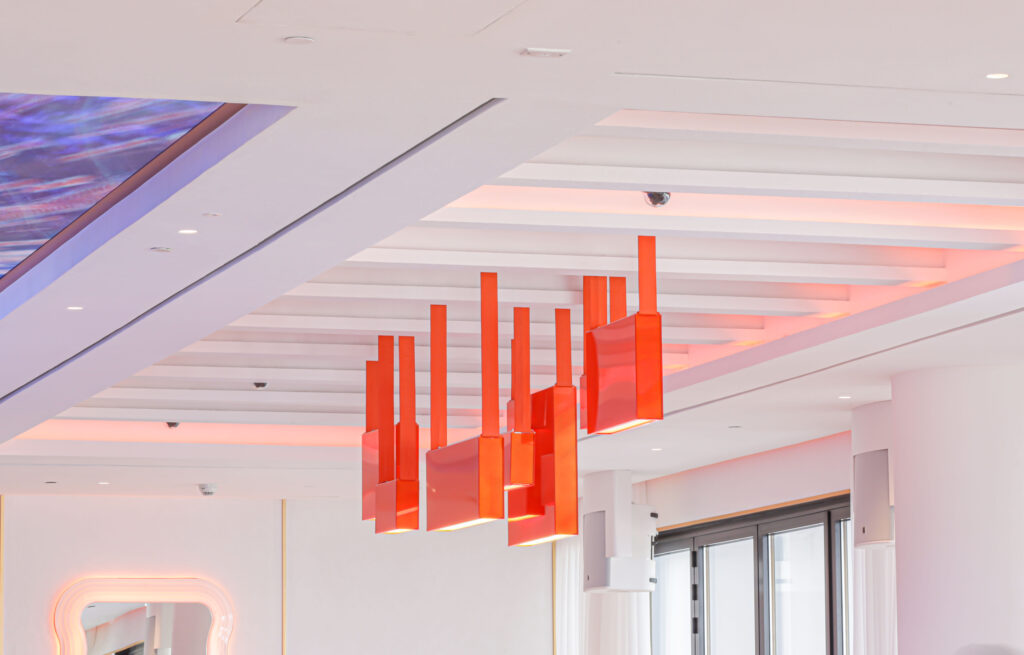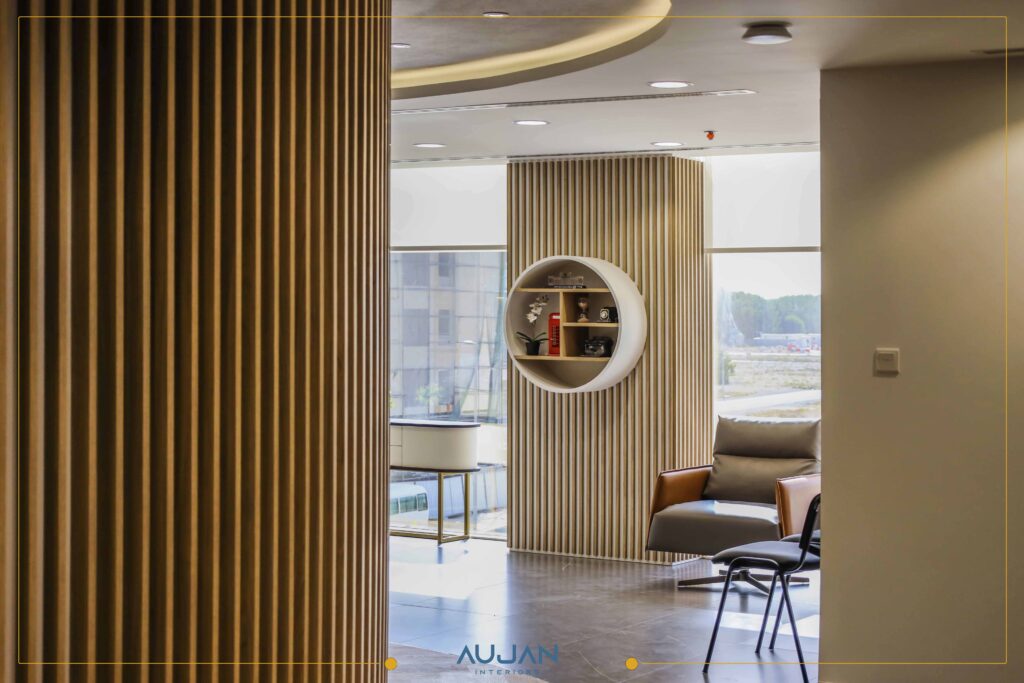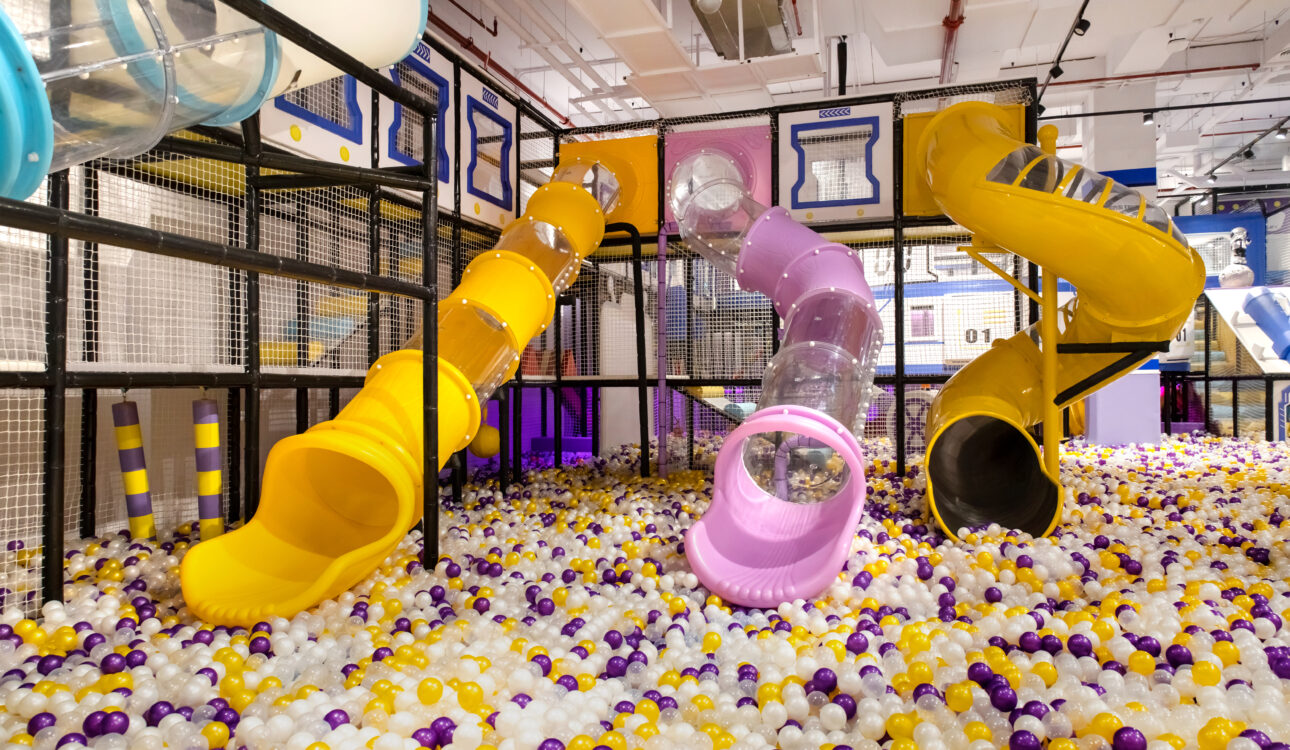Introduction
The significance of our surroundings on mental health cannot be overstated. A well-designed space can influence our mood, productivity, and overall well-being. In this article, we’ll explore 5 ways well-designed spaces transform mental health
The Impact of Colors
Colors have a profound impact on our emotions and mental state. Warm tones like red and yellow evoke energy and positivity, while cool hues like blue and green induce calmness. Understanding the psychology behind colors allows designers to create spaces that promote specific moods, contributing to a healthier mental environment.

Natural Light and Ventilation
Bringing the outdoors inside through ample natural light and ventilation fosters a connection with nature. Sunlight is a natural mood enhancer, and well-ventilated spaces contribute to a sense of freshness. Integrating these elements into design plans can significantly elevate mental well-being.

Functional Layouts
Efficient space utilization enhances functionality, reducing clutter and promoting a sense of order. A well-organized space minimizes stress and enhances cognitive function. Designing with functionality in mind is a key aspect of creating environments that positively impact mental health.
Personalized Spaces
Recognizing the diversity of individual preferences and needs is crucial. Personalized spaces, whether at home or in the workplace, allow individuals to feel a sense of ownership and comfort. Tailoring designs to cater to unique requirements contributes to a positive and supportive mental environment.
Biophilic Design
Biophilic design emphasizes the integration of nature into indoor spaces. Incorporating natural elements such as plants and water features creates a calming atmosphere, reducing stress and promoting overall well-being. Embracing biophilic design principles can significantly transform mental health.

Case Studies
Examining case studies provides tangible evidence of the impact of well-designed spaces on mental health. From residential homes to corporate offices, real-life examples showcase the effectiveness of thoughtful design in fostering positive mental well-being.
Importance of Accessibility
Creating spaces that are accessible to all is a fundamental aspect of promoting mental well-being. Inclusive design considers the needs of individuals with diverse abilities, fostering a sense of belonging and positively impacting the mental health of the entire community.
Cultural Considerations
Cultural influences play a significant role in shaping design preferences in your interior fitout. Recognizing and respecting cultural diversity in design ensures that spaces are culturally sensitive and resonate with their intended users, contributing to a positive mental experience.

Workplace Well-Being
The design of workplace environments directly affects employee well-being and productivity. Incorporating elements such as relaxation areas, ergonomic furniture, and natural light can create a conducive atmosphere that supports mental health in the workplace.
Sustainable Design
Sustainability in design not only benefits the environment but also positively influences mental health. Knowing that a space is designed with eco-friendly practices in mind contributes to a sense of well-being and responsibility, enhancing the overall mental health of its occupants.
Technology Integration
While technology is integral to modern living, finding a balance is crucial. Spaces that integrate technology thoughtfully, considering factors like screen time and digital detox, contribute to a healthier mental environment.
Budget-friendly ways to improve mental health
Not everyone has the means for a complete overhaul, but small changes can make a big difference. Explore budget-friendly ideas to transform your home environment and positively impact your mental health.

Expert Interviews
Gain valuable insights from experts in the field. Interviews with professionals in design and psychology provide a deeper understanding of the connection between well-designed spaces and mental health.
Measuring the Impact
Assessing the impact of design changes is crucial. Understanding how alterations to a space influence mental well-being allows for continuous improvement, ensuring that the environment continues to positively transform the mental health of its occupants.
Conclusion
The journey to better mental health begins with the spaces we inhabit. By understanding the impact of colors, embracing natural elements, optimizing functionality, and tailoring environments to individual needs, we unlock the 5 ways well-designed spaces transform mental health. Biophilic design, inclusivity, and sustainable practices further contribute to fostering positive mental well-being. Whether at home, in the workplace, or public spaces, these principles guide us toward environments that support our mental health. As you embark on the quest to transform your surroundings, remember the profound influence thoughtful design can have on your mental well-being.
Frequently Asked Questions (FAQs)
Q: Can the color of a room really affect my mood?
A: Absolutely. Colors have psychological effects, and choosing the right palette can significantly impact your emotions and overall well-being.
Q: How can I incorporate biophilic design into my home?
A: Introduce natural elements like plants, water features, and natural materials. Embracing nature indoors positively impacts mental health.
Q: What is the importance of sustainable design for mental well-being?
A: Sustainable design promotes a sense of responsibility, contributing to a positive mental state by knowing your environment is eco-friendly.
Q: Are personalized spaces only relevant for homes?
A: No, personalized spaces are essential in all environments. Workplace and public spaces can benefit from designs that cater to individual needs.
Q: Can technology integration negatively affect mental health?
A: Yes, excessive use of technology can impact mental well-being. Thoughtful integration and balancing screen time are crucial for a healthier space.
Q: How do I measure the impact of design changes on my mental health?
A: Assessing the impact of design changes involves observing your emotional state, productivity, and overall well-being in the modified space. Note any positive changes in mood, focus, and comfort to gauge the effectiveness of the alterations.






